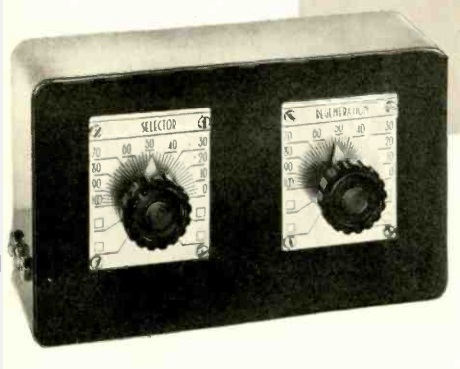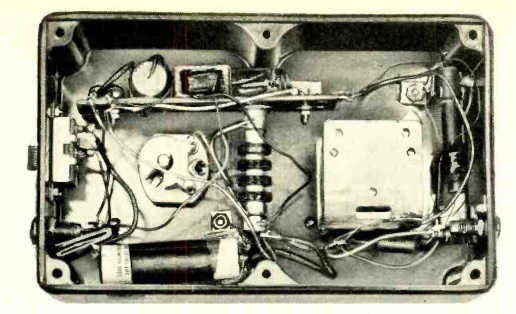 Seventy years ago, the August 1954 issue of Radio Electronics showed how to make this two-transistor regenerative receiver. It used two CK722 transistors, one for the detector, and another for one stage of audio amplification. It was said to provide ample volume on stations hundreds of miles away.
Seventy years ago, the August 1954 issue of Radio Electronics showed how to make this two-transistor regenerative receiver. It used two CK722 transistors, one for the detector, and another for one stage of audio amplification. It was said to provide ample volume on stations hundreds of miles away.
The set was billed as a preparedness device, as it made “a reliable receptor for emergency use during a power failure should a sudden air attack occur.” Since it was an emergency receiver, the antenna requirements were flexible. Two separate antenna connections were provided, one for a long antenna, and one for a short antenna. The short antenna could include “the shell of a floor lamp or table lamp, the shell of a telephone box, or to one side of an a.c. outlet. No ground connection is made if any of the above antenna substitutes are used. This precaution is necessary because of the possibility of a short in C1.”
The author noted that there was some variation in transistors, and for that reason, it was a good idea to hook the circuit up breadboard style to test them in operation before final assembly.


